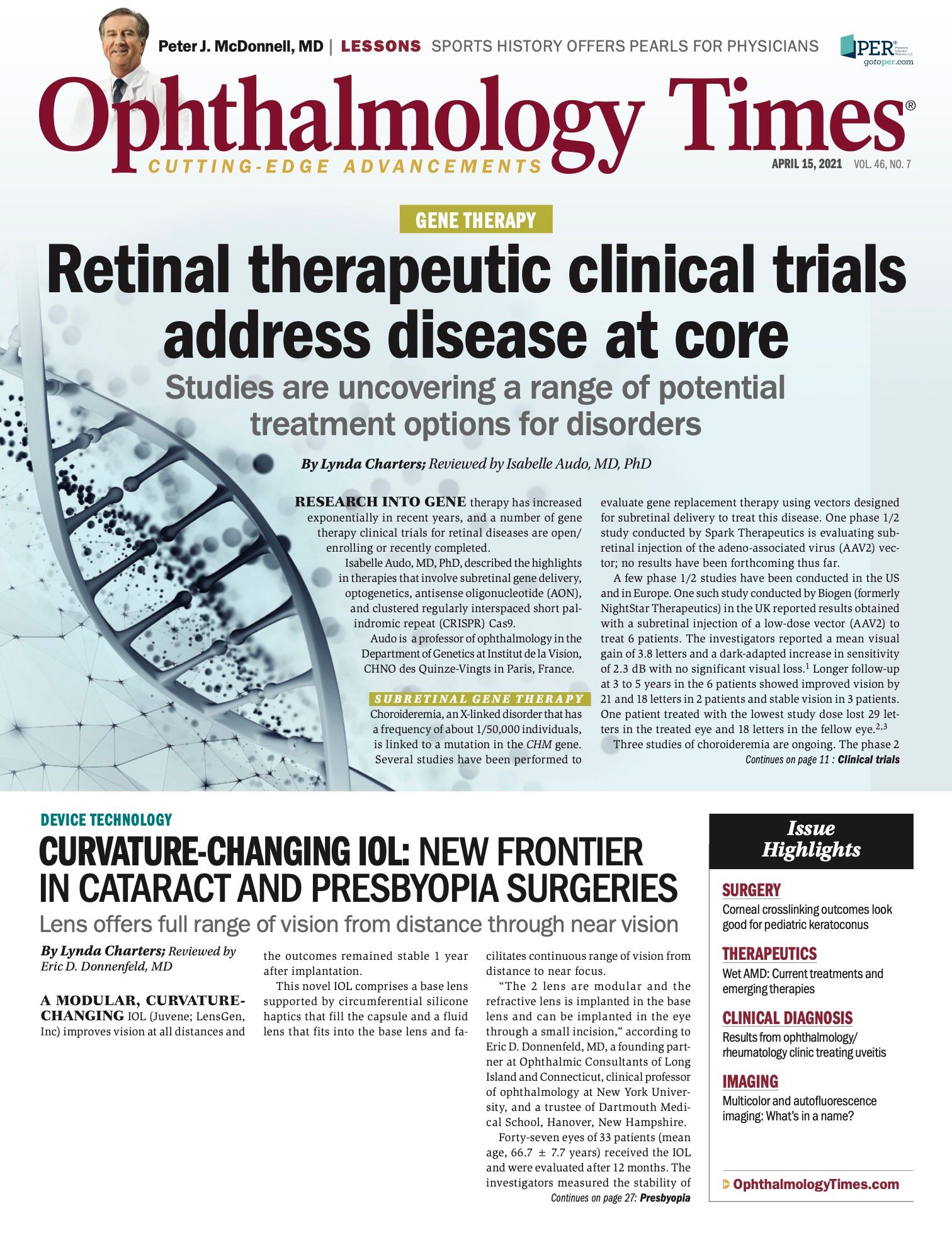Publication
Article
Digital Edition
Predicting laser vision correction results
Author(s):
Investigators examine the demographic, refractive, PRO data measure.


Reviewed by Julie M. Schallhorn, MD
Patient-reported outcomes (PROs) are critical to an understanding of patient experience after laser vision correction (LVC).
How the patient perceives the surgical outcome is just as important as the postoperative measurement of visual acuity (VA).
Julie Schallhorn, MD, an associate professor of ophthalmology at the University of California, San Francisco, pointed out the need for an appropriate way to measure patient perceptions given the frequent loss to follow-up of the patients who underwent LVC.
Related: AI enhances customized myopic LASIK with ray tracing optimization
The study and results
To shed light on this dilemma, Schallhorn and colleagues conducted a retrospective analysis of patients who underwent a primary bilateral LASIK or PRK procedure with targeted emmetropia between July 2014 and June 2016.
The investigators analyzed the demographic, refractive, and PRO data obtained preoperatively and at months 1 and 3 postoperatively.
The goal was to identify factors associated with loss to follow-up, patient satisfaction, and completion of the PRO measure, she recounted.
Data from about 37,000 patients who underwent a primary LVC were included. Of those, about 68% completed the PRO measure; the percentage at the 1-month visit was 54% and there was a 15% loss to follow-up, and the numbers at 3 months were 28% and 51%.
Related: Transscleral laser therapy device simplifies procedure
Data analysis showed that patients who returned for follow-up and completed the PRO measure were more likely to be women.
In addition, patients who underwent a PRK and had higher amounts of preoperative ametropia were more likely to return for follow-up and complete the PRO measure.
When this information was combined in a multivariant logistic regression model, at month 1, older age (P < .001), female gender (P < .001), PRK (P < .001), and higher amounts of myopic/hyperopic corrections (P = .003) all were associated significantly with completion of the PRO measure.
“All of that is only important if it affects the patient satisfaction. If those variables have no effect on patient satisfaction, we would not expect them to alter our observations, regardless of loss to follow-up,” she said.
Related: Treating vitreous opacities with YAG laser vitreolysis
The investigators then conducted an analysis of the patient-reported satisfaction in relation to the variables predictive of loss to follow-up and completion of the PRO measure.
“At 1 month, myopia/hyperopia, gender, age, procedure, and the postoperative binocular uncorrected VA/line below 20/16 all affected the patient satisfaction,” she said. By 3 months, all remained significant except for the procedure.
A closer look
Regarding age, at both months 1 and 3, the older patients were more likely to both complete the PRO measure and to be dissatisfied with their VA.
The preoperative manifest spherical equivalent at 1 month showed no association between the spherical equivalent and completion of the PRO measure; however, at 3 months, patients with higher preoperative myopia and hyperopia were more likely to complete the PRO measure.
Related: Robotics: Allowing surgeons to perform the seemingly impossible
“Most importantly, the postoperative VA was predictive of both PRO completion and patient satisfaction,” Schallhorn said. “Patients with worse VA were more likely to complete the PRO measure and were much less likely to be satisfied with their VA.”
Based on this analysis, she concluded that age, gender, preoperative refractive error, and postoperative VA all predict patient-reported satisfaction after LASIK and PRK, and all except the last predicted follow-up at 1 and 3 months postoperatively.
“Among the patients who completed the follow-up evaluations, the postoperative vision was strongly predictive of patient satisfaction and completion of the PRO measure,” she said.
Schallhorn noted that ophthalmologists cannot view PRO measures as a simple outcome of surgery and must take a more nuanced view.
Related: Improving surgical safety, efficiency, and outcomes for patients
“Patients who undergo surgery have a visual outcome and factors from both the visual outcome and intrinsic factors present preoperatively result in either the patients being lost to follow-up or the decision to complete their PRO. The PRO data collection is heavily dependent on factors that influence the outcome,” she said, adding that she advises caution when analyzing and interpreting PRO data and understanding this, and hopes to delve deeper into what factors comprise patient satisfaction postoperatively and how to improve patient outcomes.
--
Julie M. Schallhorn, MD
e:julie.schallhorn@ucsf.edu
This article is adapted from Schallhorn’s presentation at the American Academy of Ophthalmology’s 2020 virtual annual meeting. Schallhorn is a consultant to Carl Zeiss Meditec and Vanda Pharmaceuticals and holds equity in Long Bridge Medical.

Newsletter
Don’t miss out—get Ophthalmology Times updates on the latest clinical advancements and expert interviews, straight to your inbox.




